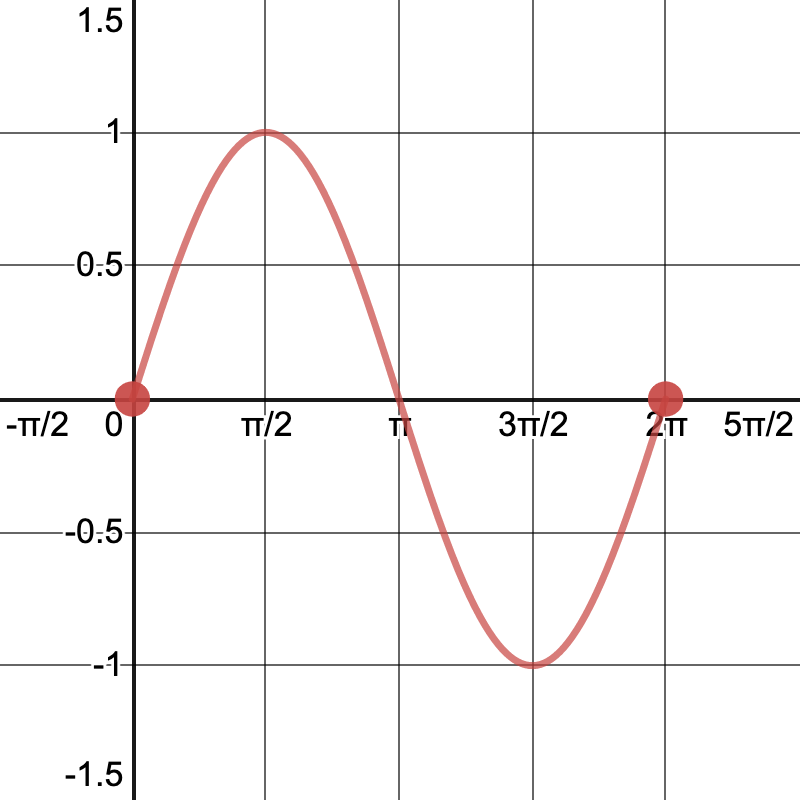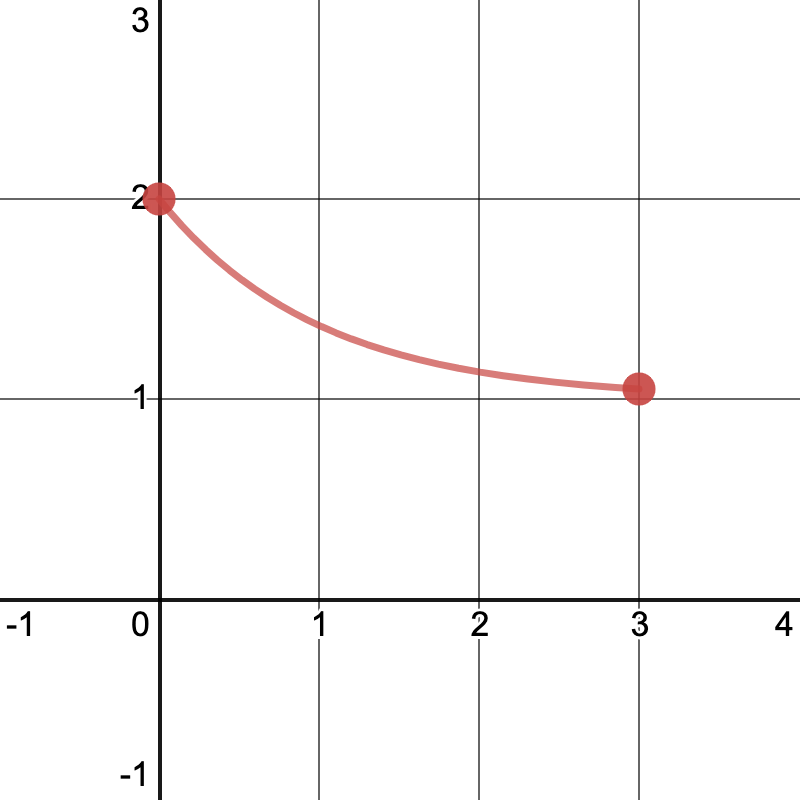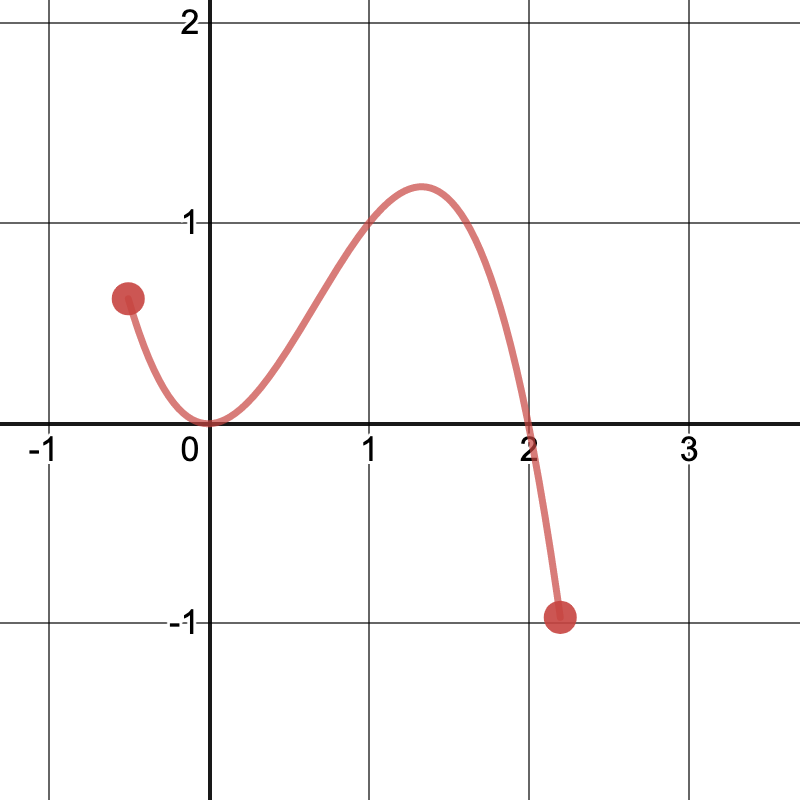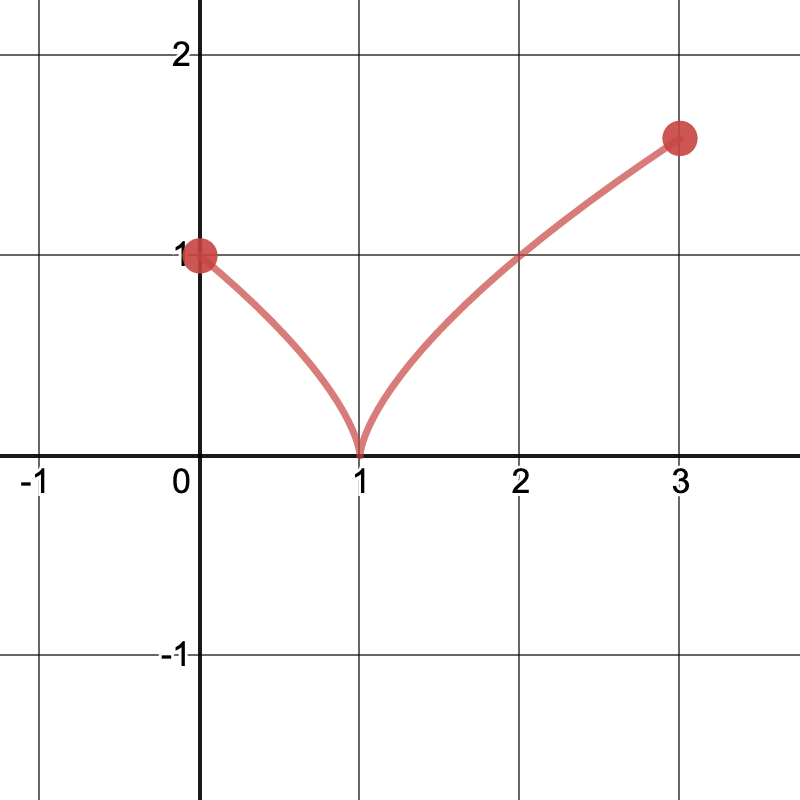Section 3.4 Extreme values (AD4)
Learning Outcomes
Use the Extreme Value Theorem to find the global maximum and minimum values of a continuous function on a closed interval.
Remark 3.4.1.
In many different settings, we are interested in knowing where a function achieves its least and greatest values. These can be important in applications—say to identify a point at which maximum profit or minimum cost occurs—or in theory to characterize the behavior of a function or a family of related functions.
Example 3.4.2.
Consider the familiar example of a parabolic function such as \(s(t) = -16t^2 + 32t + 48\text{.}\) This function represents the height of an object tossed vertically straight up: its maximum value occurs at the vertex of the parabola and represents the greatest height the object reaches. This maximum value is an especially important point on the graph and we can notice that the function changes from increasing to decreasing at this point.
Definition 3.4.3.
We say that \(f(x)\) has a global maximum at \(x=c\) provided that \(f(c)\geq f(x)\) for all \(x\text{.}\) We also say that \(f(c)\) is a global maximum value for the function. On the other hand, we say that \(f(x)\) has a global minimum at \(x=c\) provided that \(f(c)\leq f(x)\) for all \(x\) near \(c\text{.}\) We also say that \(f(c)\) is a global minimum value for the function. The global maxima and minima are also known as the global extrema (or extreme values or absolute extrema) of the function.
Activity 3.4.4.
According to Definition 3.4.3, which of the following statements best describes the global extrema of the function in Figure 46?The global maximum is \(t = 1\text{,}\) because this is where the function goes from increasing to decreasing.
The global maximum is \(s(1) = 64\text{,}\) because \(s(t)\leq 64\) for every other input \(t\text{.}\)
The graph has two global minima at the endpoints because the endpoints must be global extrema.
The graph has no global minimum.
Observation 3.4.5.
There can be some issues when trying to determine the global mimimum and maximum values of a function only using its graph. The Extreme Value Theorem will guarantee the existence of global extrema on a closed interval. Then we will see how to use derivatives to find algebraically the extrema of a function.
Theorem 3.4.6.
If \(f\) is continuous on a closed interval \([a,b]\text{,}\) then \(f\) has both a global maximum and a global minimum on the interval.
Activity 3.4.7.
For each of the following figures, decide where the global extrema are located.
(a)

(b)

(c)

(d)

Activity 3.4.8.
The Extreme Value Theorem (EVT) guarantees a global maximum and a global minumum for which of the following?
\(f(x)=\dfrac{x^{2}}{x^{2}-4x-5}\) on \([-5,0]\text{.}\)
\(f(x)=\dfrac{x^{2}}{x^{2}-4x-5}\) on \([0,4]\text{.}\)
\(f(x)=\dfrac{x^{2}}{x^{2}-4x-5}\) on \([4,6]\text{.}\)
\(f(x)=\dfrac{x^{2}}{x^{2}-4x-5}\) on \([6,10]\text{.}\)
Activity 3.4.9.
For the following activity, draw a sketch of a function that has the following properties.
(a)
The function is continuous and has an global minimum but no gloabl maximum.
(b)
The function is continuous and has an global maximum but no global minimum.
Definition 3.4.10.
We say that \(x=c\) is a critical point (or critical number) of \(f(x)\) if \(x=c\) is in the domain of \(f(x)\) and either \(f'(c) = 0\) or \(f'(c)\) does not exist.
Activity 3.4.11.
Which of the following are critical numbers for \(f(x) = \frac{1}{3}x^3 - 2x + 2\text{?}\)
\(x = \sqrt{2}\) and \(x = -\sqrt{2}\text{.}\)
\(x = \sqrt{2}\text{.}\)
\(x = 2\) and \(x = 0\text{.}\)
\(x = 2\text{.}\)
Remark 3.4.12. The Closed Interval Method.
The following is a way of finding the global extrema of a continuous function \(f\) on a closed interval \([a,b]\text{.}\)
Make a list of all critical points of \(f\) in \((a,b)\text{.}\) (Do not include any critical points outside of the interval).
Add the endpoints \(a\) and \(b\) to the list.
Evaluate \(f\) at all points on your list.
The smallest output occurs at the global minimum. The largest output occurs at the global maximum.
Activity 3.4.13.
What are the global extrema for \(f(x) = 3x^4 - 4x^3\) on \([-1,2]\text{.}\)
Global maximum is when \(x = 0\) and global minimum when \(x = 1\text{.}\)
Global maximum is when \(x = 2\) and global minimum when \(x = -1\text{.}\)
Global maximum is when \(x = 2\) and global minimum when \(x = 1\text{.}\)
Global maximum is when \(x = 0\) and global minimum when \(x = -1\text{.}\)
Activity 3.4.14.
What is the global extrema for \(f(x) = x\sqrt{4-x}\) on \([-2,4]\text{.}\)
Global maximum is when \(x = -2\) and global minimum when \(x = \frac{8}{3}\text{.}\)
Global maximum is when \(x = 4\) and global minimum when \(x = \frac{8}{3}\text{.}\)
Global maximum is when \(x = \frac{8}{3}\) and global minimum when \(x = -2\text{.}\)
Global maximum is when \(x = 4\) and global minimum when \(x = -2\text{.}\)
Activity 3.4.15.
Explain how to find the globalminimum and global maximum values of the function \(f(x)=-2 \, x^{3} + 18 \, x^{2} + 42 \, x + 33\) on the interval \([-2,2]\text{.}\)
Activity 3.4.16.
In this problem you will consider the function \(g(x)\text{.}\)
(a)
What can you say about the point \(x=0\text{?}\)
(b)
In addition to \(x=0\text{,}\) find the other two critical points. What are the critical points of \(g(x)\text{?}\)
\(\displaystyle x=0, \, x=1, \, x= 2\)
\(\displaystyle x=0, \, x=-1, \, x= 2\)
\(\displaystyle x=0, \, x=-1, \, x=-2\)
\(\displaystyle x=0, \, x=1, \, x= -2\)
(c)
Can you use the Closed Interval Method on \([-4,-1]\text{?}\) If you can, find the global max and min. If you can't, explain why.
(d)
Can you use the Closed Interval Method on \([1,4]\text{?}\) If you can, find the global max and min. If you can't, explain why.
(e)
Can you use the Closed Interval Method on \([-1,1]\text{?}\) If you can, find the global max and min. If you can't, explain why.